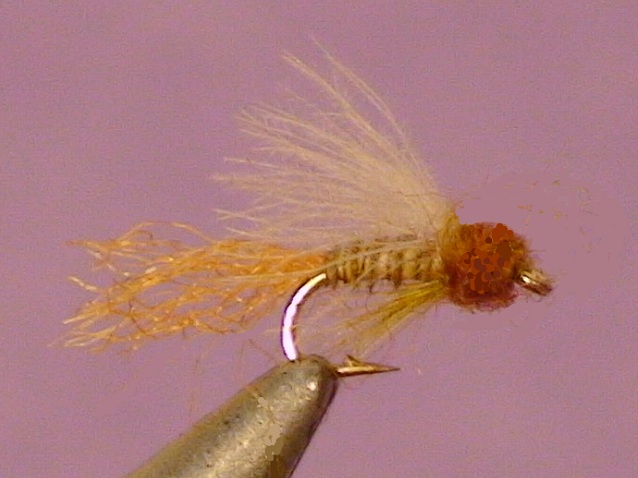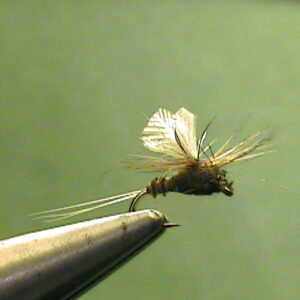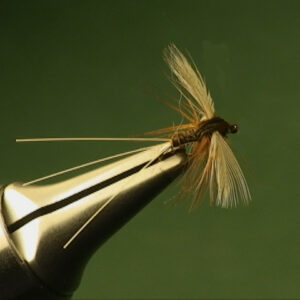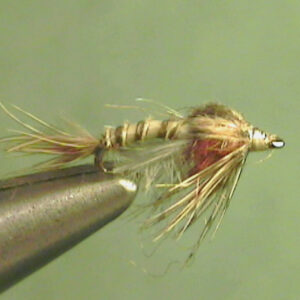Hook Size: 18
The Perfect Fly Blue Quill Emerger with trailing shuck is an excellent imitation of the actual emerger as it sheds its skin near the surface of the water as it changes into a dun. It looks more like the dun than the nymph. The fly should be fished just under the surface or in the surface skim.
The nymphs migrate to slower, calmer water before emerging. They
may make several attempts to emerge. Normally they swim to the surface
several times before shedding their shucks. This is especially true when the
hatch first starts and the water is still cold. They may have a very difficult time
shedding their shucks and breaking through the surface skim, especially if the
water is very calm. This hatch usually occurs during the early afternoon or
during the warmest part of the day.
Normally, it is difficult to detect the trout feeding on the emergers. If the water is
very shallow, you may see the fish dart in and out but if there is any depth to it,
you may not see anything. More often, will see a flash of the fish feeding on the
emergers. If the water suddenly warms to 50 degrees or higher during the hatch
period, the trout may eat the duns better than the emergers. This makes it a lot
easier on those anglers that must see their fly in order to detect a strike. The
emerger patterns require a lot of concentration. You can miss strikes easily. At
times, especially when the water is very cold (from 50 degrees down to 45
degrees) the emerger imitations may the only thing they will eat.
Emerger Presentation:
Unweighted Imitations of the nymph can be used to imitate the emerging nymphs
if you fish them a few inches below the surface. Fish the emerger imitations wet
without any added weight by casting them up and across the current on the
swing. You will be better off if you will use a good imitation of the emerger.
You want the fly to stay in the smooth, slower water on the outside of the current
seams, not the fast water. Mend your line to get the fly down. Again, as with the
weighted nymphs, this isn’t easy to do without spooking the fish in many cases.
You will need to make all kinds of creative cast. Slack line, pile, curve and reach
cast may help you present the emerger (and nymph) into the slow water
bordering the fast water without drag. The type of cast needed strictly depends
on the particular current situation.
Copyright James Marsh 2013




